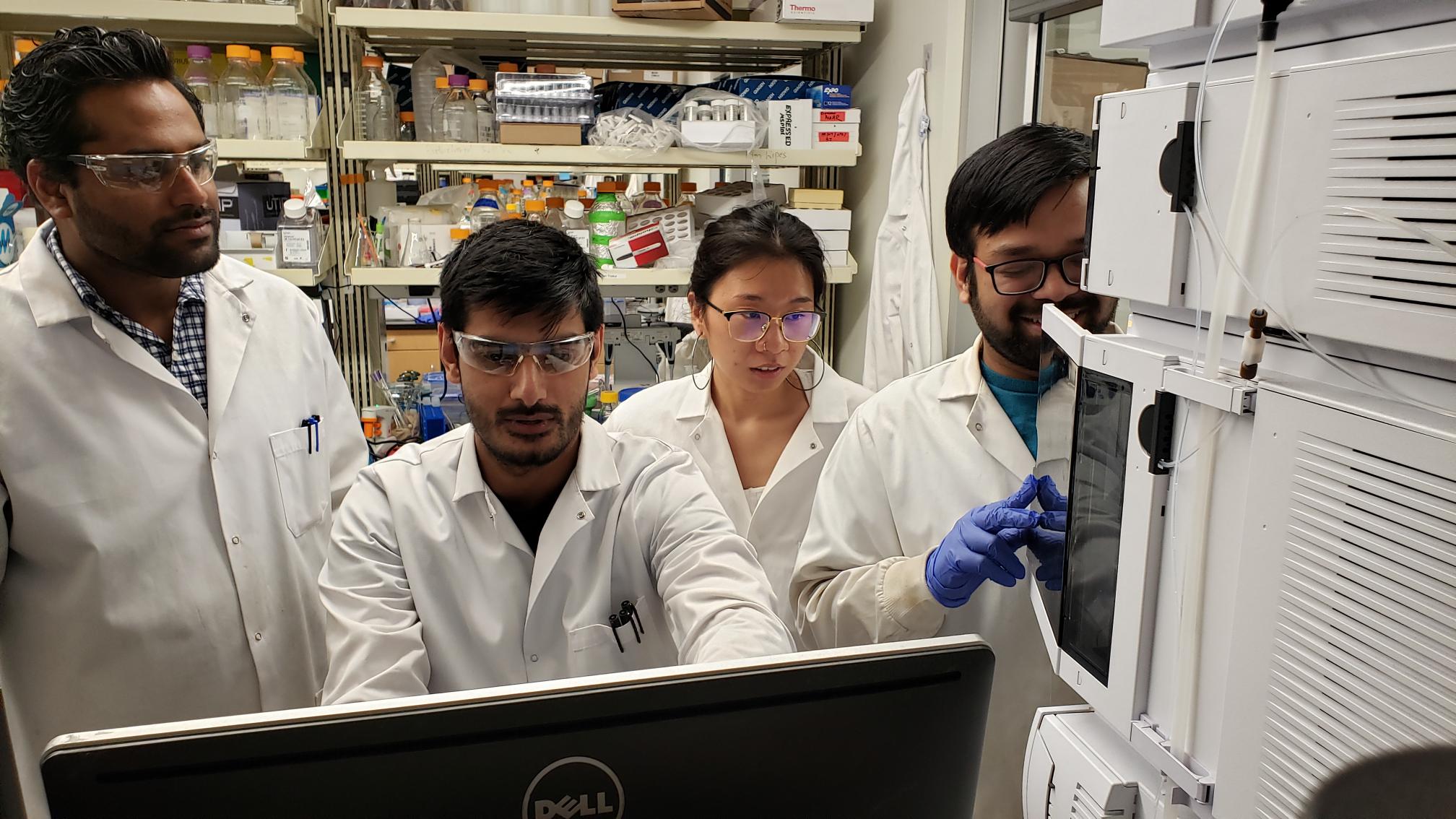
Photo courtesy of Matthew Eddy.
UF Chemists Advance a New Frontier in Drug Design
A research team investigates a long-neglected mechanism behind disease treatment
A team of UF researchers has advanced our understanding of protective layers on cells — a microscopic discovery with large potential for future drug design. The team, including Matthew Eddy, assistant professor of chemistry, and graduate students Naveen Thakur and Arka Ray, published its findings in the leading scientific journal Nature Communications. The findings pave the way for developing new therapeutic strategies associated with pathological conditions like inflammation, neurodegenerative diseases, and cancer with the aim to advance drug design.

According to the researchers, G protein-coupled receptors (GPCRs), which are embedded in phospholipids of cell membranes, are a crucial part of many physiological processes. They detect signals from external stimuli, such as hormones, neurotransmitters, and drugs, and transmit them to the inside of the cell, triggering a physiological response. Despite their significance, with one-third of FDA-approved drugs targeting GPCRs, scientific understanding of the mechanisms behind GPCR signaling remains limited. Therefore, the team sought to expand upon this knowledge.
“Our study highlights the importance of investigating the cellular membrane in greater detail, since these cellular signaling proteins spend most of their time there,” the researchers said.
After testing drug response in a variety of membrane environments, they discovered cellular membrane composition can significantly alter the response of receptor proteins to drugs. Consequently, inherited or environmental factors influencing cellular membrane composition, such as metabolism, diet, and disease, can impact how drugs interact with the human body.
The novel insights gained from this research show that specific lipids can have a significant impact on the activation of a type of GPCR that acts as an important target in the treatment of Parkinson’s disease and several cancers. The team stresses the potential for future exploration of this receptor, called A2A adenosine receptor, as a target for cancer immunotherapies.

The research ultimately provided new insights into the regulation of cellular processes by GPCRs and provided new criteria for rational drug design that better takes into consideration the cellular environment — which evidently increases the drug’s effectiveness and contributes to drug discovery.
The findings were made possible by an integrated scientific approach between research groups at the University of Florida, the National Institutes of Health, and the University of Delaware. “We are proud to be part of a collaborative and interdisciplinary team that employed a wide range of experimental, computational, and cell-based methodologies to approach the research problem from multiple angles,” the researchers said.
While navigating the multi-pronged approach, the UF graduate students leading the study had the chance to develop critical skills for their professional development, including scientific communication, project management, and teamwork.
“During the course of this project, I have experienced remarkable growth as a researcher,” said Thakur. “My career aspirations are to lead research in cutting-edge drug discovery in the pharmaceutical industry, and I am confident that my current experience has equipped me to succeed in my future career.”
Read the full study here.


